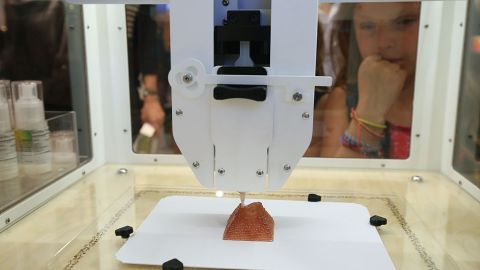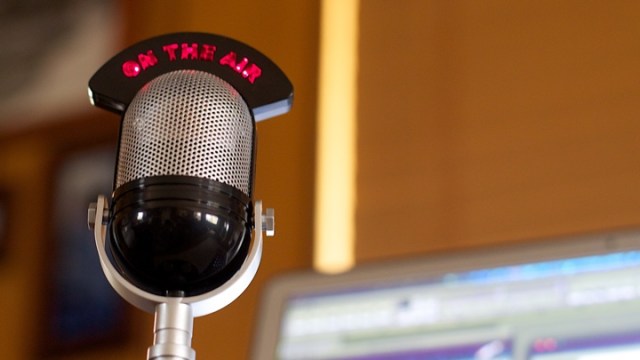From Printer to Plate: How Might 3D Food Printing Transform the Grocery Store?

3D printing, where a physical object is ‘printed’ from a three-dimensional digital model, has been developing since the 1980s. Over the last decade the technology has been rapidly evolving. 3D printing was once reserved for universities and corporations designing prototypes – big, hulking, expensive devices printed out architectural models, machine parts and running shoe prototypes. A few years later, these printers became smaller and more affordable. Many are now found in storefronts printing out tchotchkes, some systems are now making their way into grade schools and people’s homes.
Digitally printed food is the new frontier. Already 3D printers are producing colorful layers of candy around the world. 3D printing has recently been introduced into grocery store culinary circles to print out masterfully designed desserts. This summer the technology made a splash in the world of serious foodies. A pop-up 3D printer restaurant, aptly named Food Ink, opened with the promise of delivering, not just a meal, but gourmet cuisine from “pixels to printer to plate”. Even the restaurant’s tables, chairs, lamps and other accessories were printed to create the complete 3D experience.
Clearly 3D technology is continuing to develop and may be hitting a new stride that will impact food and many other ways we live. Today 3D meals are foods that are paste-like, such as chocolate mousse, hummus or cheese. Unique partnerships between programmers, chefs and designers are working at new ways to print meals that are more ‘substantive’ than today’s foods that may be perceived by many as high-design astronaut food.
By definition, innovation brings disruption. 3D food printing is converging with the demography and culture of convenience. From fast moving Millennials, to Boomers who seek hassle-free living, 3D food printing may change not just how we eat, but how we buy what we eat. What might the convergence of this new technology and the disruptive demographics of convenience mean for the future of the grocery store?
Here are some possibilities:
Will grocery stores go from prepared foods to print and pick-up custom foods? A new value-added service of tomorrow’s grocery store might become the personalized food business. In a world of gluten, lactose and other dietary constraints and preferences, customized prepared foods from highly capable printing services at grocery stores may become the new normal. Until everyone has a 3D printer in their home, grocers might collect a customer’s personal diet and nutrition information from custom web portals or even the customer’s wearables so to print customized meals. Imagine recipes informed and personalized by the customer’s wearable devices (e.g., reduce calorie intake today because of a decrease in physical activity) or meals prescribed by physicians to manage chronic conditions – all for pick-up or home delivery.
Will the grocery store provide customers with 3D printer equipment? Consider the television cable company. A monthly fee for television programming is charged and the company owns and changes out the cable box as necessary. Will grocers become equipment and service providers to the home to ‘hardwire’ the relationship with households?
A smaller front of store future? In a 3D food world we might buy more pre-packaged ‘food cartridges’ rather than larger ‘whole’ food ingredients requiring less store shelf and storage space. Will entire grocery store aisles resemble the printer ink and paper aisle of the local office supply store?
Does grocery home delivery become more than just convenience? As the 3D food printing technology develops, it may become integral to other Internet-of-Things devices in your home, such as your ‘smart’ refrigerator. Similar to your printer today that notifies you when you are low on ink, will your refrigerator and 3D food printer notify the grocery store that new ingredients are needed and delivery of your favorite foods occurs without any active consumer action?
Will recipe design and software be the grocer’s new secret sauce? 3D printing might bring tech world business model elements to grocery stores, such as software-as-a-service or SaaS. SaaS sells or licenses and delivers software to the user on demand rather than as a product in a box. In the future, grocery stores might compete on how their chefs, or store’s ‘food designers’, produce the best meal programs available only on that store’s website for single downloads and only using that store’s supplies.
Used to its fullest, technology does more than simply improve what we do – it profoundly changes what we do. 3D food printing has some distance to go before it produce attractive and tasty foods for everyone. However, 3D printing has the potential to transform the grocery store. Grocers may seek an entirely different physical footprints and store designs. Following current trends, more space may be allocated to the back of the store for prepared foods, the front of the store may be more service-oriented with 3D equipment, digital nutritionists, and demonstrations. Moreover, a grocery store’s digital presence will be more than simply a portal for information and sales. A grocery store’s website will become a vital gateway to countless proprietary SaaS applications that will define how we food shop and to the competiveness of individual stores. New services enabled by the Internet-of-Things and other technologies will emerge not just as novel service innovations, but as necessary responses to consumer expectations and lifestyles. New professions may be introduced to the grocery store. Will grocers be recruiting new professionals such as in-store food software designers, home 3D printing engineering & repair specialists, or even digital nutritionists. Tech touches and transforms everything – food and food shopping is a rich frontier for innovation.
Image Credit: Cindy Ord, Getty images





